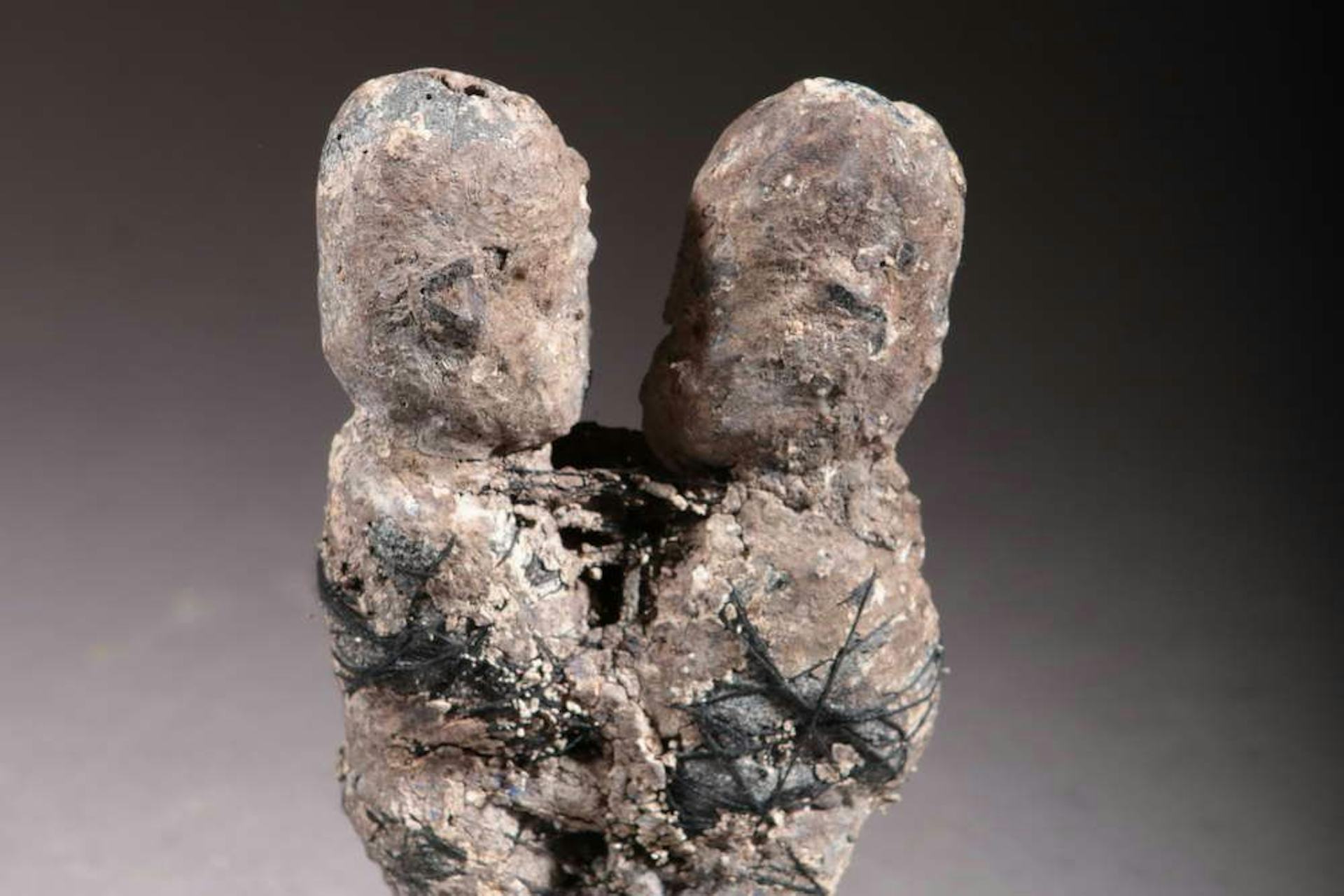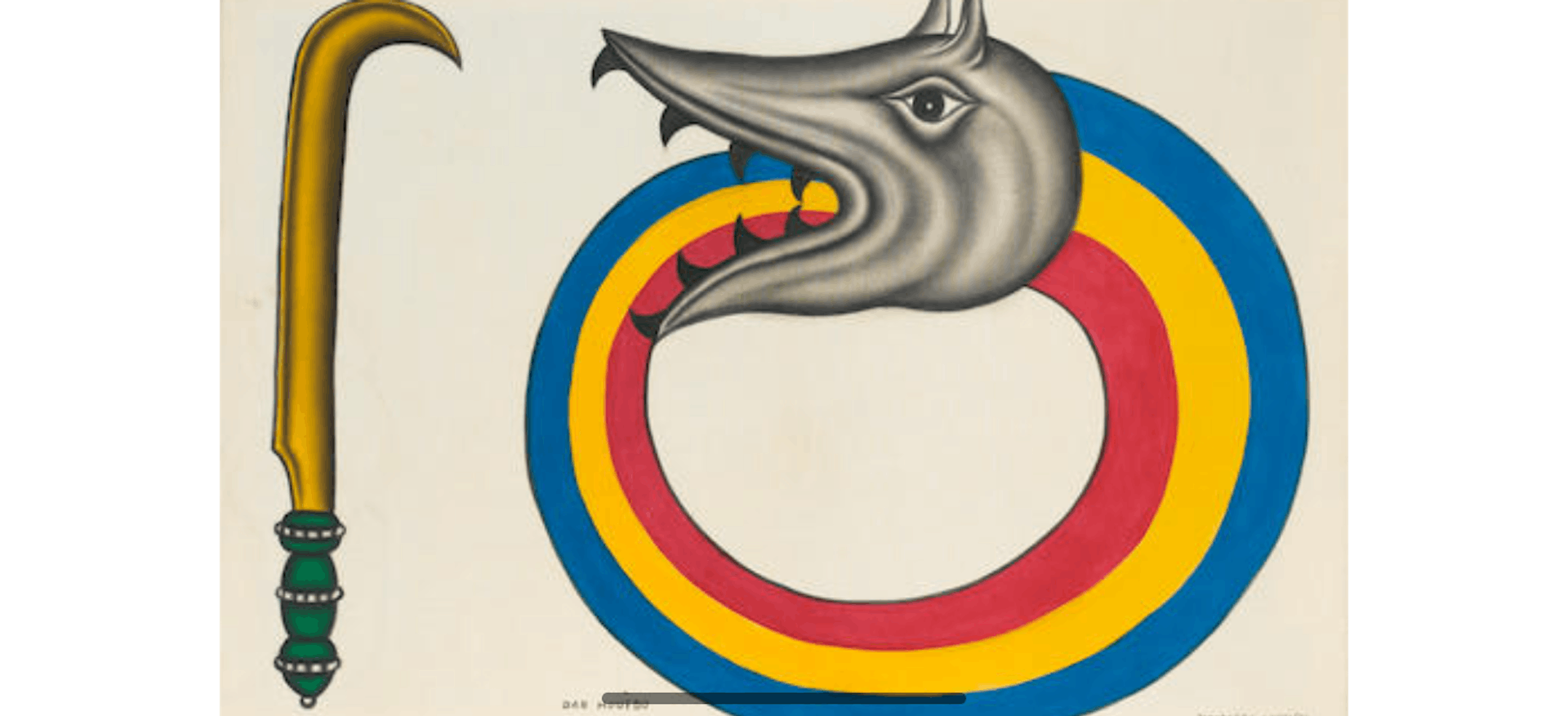Mawu-Lisa

A Vodun wedding idol from Togo, by Fon artist (n.d).
Art Africain - Masques d'AfriqueCopyrightOverview
Mawu-Lisa is the creator god of the Fon pantheon. The deity is actually a combination of two gods, Mawu and Lisa, who merged to form a single being with two faces.[1]
The dual nature of the god represents balance between the opposing elements of the universe. Mawu is the female aspect of the deity, associated with motherhood, gentleness, forgiveness, and fertility. She represents the earth, the west, the moon, the night, and the rising sun.[2]
Lisa, the male aspect of the deity, is associated with strength, power, and virility. He represents the sky, the east, the sun, the day, and the setting sun.[3] According to Fon mythology, Mawu and Lisa eventually merged into one being. Together they had seven children, who became the most important vodun (gods) of the Fon pantheon.
Mawu-Lisa is best known for taking over the creation of the world from the Supreme Being, Nana-Buluku. Mawu-Lisa created the other gods, the earth, and all life. The god was also responsible for imposing order on the universe and assigning a different realm to each vodun.
Pronunciation
English
Fon
Mawu-Lisa Mawu-Lisa Phonetic
IPA
[mah-woo-LEE-sah] /mã́.wú.li:.sa/
Mawu-Lisa Creates the World

Dan-Aïdo Houèdo (Rainbow Serprent) by Beninese artist, Cyprien Tokoudagba (20th century).
BonhamsCopyrightIn Fon mythology, Mawu-Lisa is considered the creator of the world. The Fon creation myth states that a great cosmic serpent named Aido-Hwedo carried Mawu-Lisa around in his mouth as the god shaped the earth. The snake’s movements created the curves of the landscape, such as the hills and valleys. Wherever the snake and the god rested, Aido-Hwedo’s excrement formed the mountains.[4]
Once Mawu-Lisa had finished creating the world, the god ordered Aido-Hwedo to coil himself up into a circle beneath the earth to hold it in place. Whenever the snake stirred, the earth quaked; when he revolved around the earth, he caused the heavenly bodies to move.[5] He is thus thought to be the source of earthquakes and other natural phenomena.
On the first day after creating the world, Mawu-Lisa gave birth to seven children, who would become the major vodun of the Fon pantheon. That same day, Mawu-Lisa also made human beings out of clay. On the second day, the god made the earth habitable for human life. On the third day, Mawu-Lisa gave humans the ability to see and speak, while on the final day, humans received the skills and knowledge they would need to survive.[6]
Mawu-Lisa then set about dividing the realms of the world among her children. The eldest son, Sakpata, received dominion over the earth.[7] Sogbo, the second son, became the god of thunder and lightning. Agbe received dominion over the seas and all sea life. Age became the god of the hunt, while Gu was named the god of iron. Djo became the god of air.
But when Mawu-Lisa came to her seventh and final son, Legba, there were no more realms to give. Because of this, Legba became Mawu-Lisa’s messenger—the only god who can travel freely between all realms.